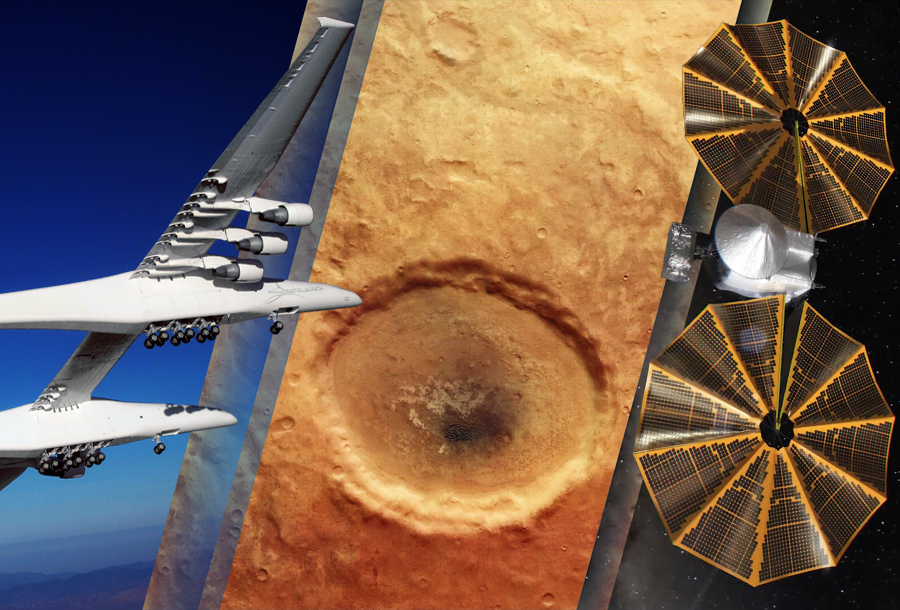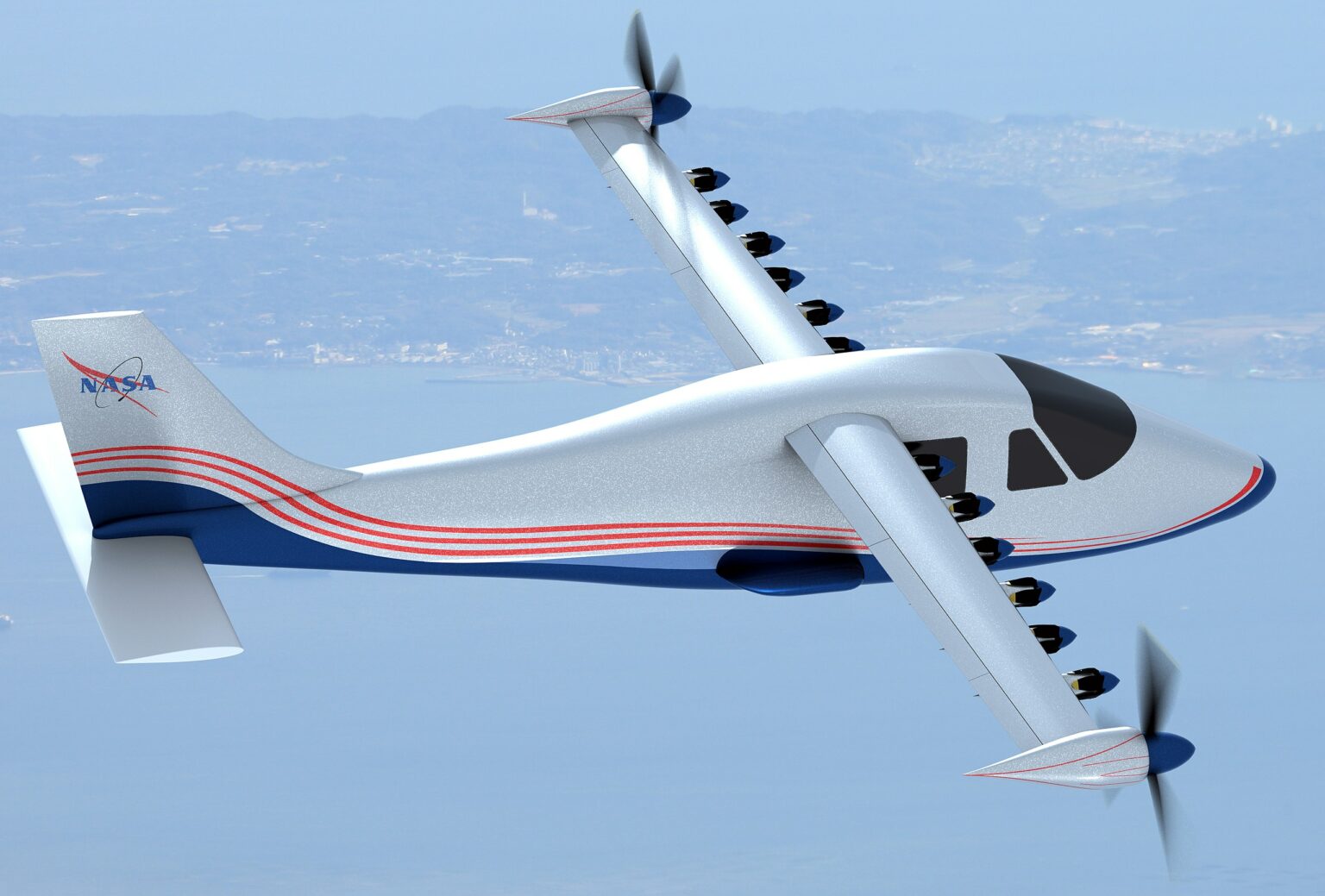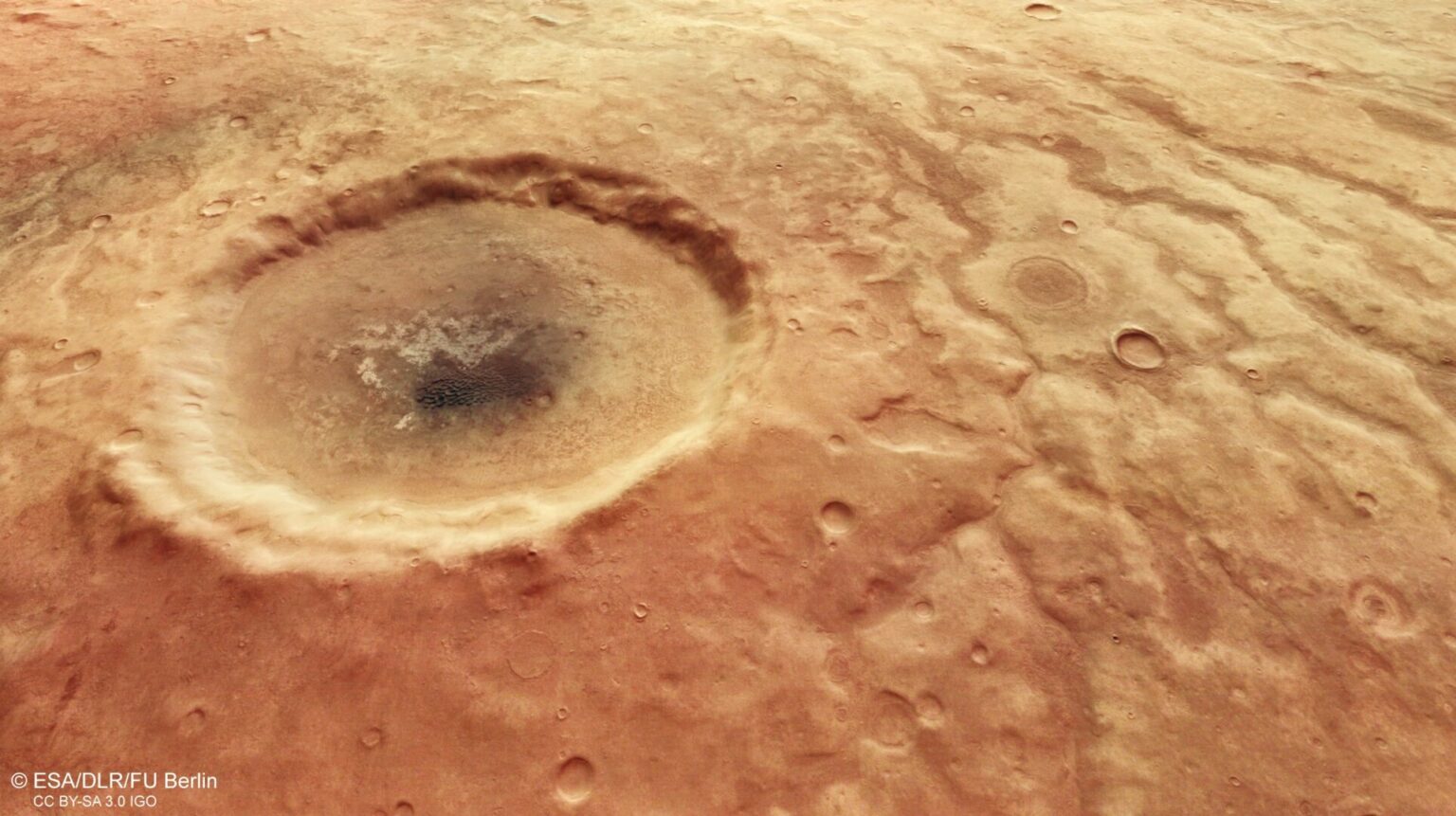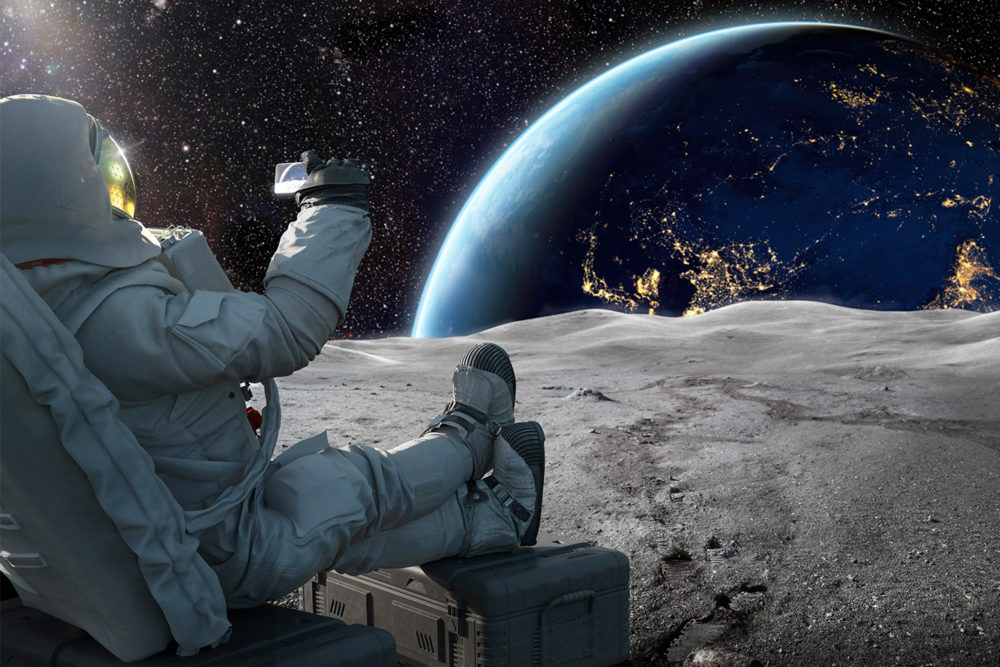Selection of the most interesting space news for the week: NASA’s electric plane, attempts to deploy the Lucy solar array, the “eye” on Mars, the “molecules of life” in asteroid matter. And we also talk about the most interesting places for space tourism in the Solar System.

NASA prepares for a test flight of the X-57 electric aircraft
The experimental fully electric X-57 aircraft manufactured by NASA will take to the air for the first time in July 2022. The aim of the project is to explore the possibility of creating a more efficient and environmentally friendly aircraft equipped with a fully electric power plant.

Development of the X-57 began in 2016. The project was based on an Italian-made twin-engine Tecnam P2006T aircraft. Its regular engines were two 60-kilowatt electric motors. which drive two 1.5-meter screws installed near the wingtips. 12 half-meter screws with small electric motors are installed along the front edges of the wings. Electric motors and avionics are powered by two 180-kilogram lithium-ion batteries installed in the cockpit of the X-57 aircraft. They provide a total power of 23 kilowatt-hours.
Engineers tried to deploy the jammed solar array of the Lucy probe
In the period from May 9 to June 2, NASA specialists made four attempts to fully open the jammed solar array of the Lucy device. They led to partial success, allowing us to hope that the problem will not affect the further course of the mission. It is also worth noting that on June 7, Lucy performed a trajectory correction. This is the first of a series of maneuvers that the device will perform in preparation for the flyby of the Earth, scheduled for October 16, 2022.
Market News
Stratolaunch plane took off for the sixth time
Stratolaunch has announced the sixth flight tests of the Roc aircraft, currently the world’s largest aircraft. In total, it stayed in the air for 86 minutes, reaching a maximum altitude of 4570 meters. The purpose of the flight was to check the behavior of the aircraft after adding a pylon. In the future, it will be used for transportation and air launch of Talon-A hypersonic vehicles.

It is worth noting that the sixth flight of the giant aircraft did not achieve all its intended goals. The original mission plan assumed that it would stay in the air for three and a half hours. But the pilots had to land it ahead of schedule due to technical problems.
US Space Force transferred the payload for the Space Norway mission
The US Space Force has announced that it has handed over the first of two EPS-R (Enhanced Polar Systems-Recapitalization) complexes that will go into space as part of the Space Norway mission.
EPS-R was developed by Northrop Grumman and is designed for broadband satellite communications in the Arctic. Their cost is USD 1.3 billion. The complexes will be installed on the ASBM satellites. They will be launched next year by a Falcon 9 rocket from Vandenberg Air Force Base and launched into highly elliptical orbits. The mission also includes a communications payload for the Norwegian Ministry of Defense and the British satellite operator Inmarsat.
Interesting
“Molecules of life” found in samples of the Ryugu asteroid
More than 20 types of amino acids were found in samples from the Ryugu asteroid, delivered to Earth in December 2020. This discovery is the first proof that amino acids exist on asteroids in space. This discovery is of great importance for understanding how such vital organic molecules got to Earth.
Mars Express photographed the “eye” on Mars
The Mars Express mission support group has published a series of images of one of the sections of the Martian surface. They depict an unnamed crater, outwardly somewhat resembling a human eye.

Earth’s Magnetic Poles are not going to flip
The anomaly of the magnetic pole in the South Atlantic does not indicate the approach of a change of poles. The study of samples conducted by an international team of scientists showed that similar phenomena have been observed repeatedly over the past 9 thousand years. They did not lead to global cataclysms. An article with the results of the study was published in the journal Proceedings of the National Academy of Sciences.
Articles
Travel guide to Solar System
Until recently, the phrase “space tourism” was found only in films and on the pages of science fiction novels. Now there are a number of companies on the market offering various options for space flight. In our article, we consider the most promising corners of the Solar System from the point of view of space tourism. Who knows, perhaps in the future the celestial bodies we mentioned will enjoy incredible popularity among rich people and thrill-seekers.

12 interesting facts about Uranus
Greenish Uranus is considered to be the dullest planet of the solar system. And yet we do have something interesting to tell about it. In our article we have collected 12 interesting facts about the seventh planet from the Sun.
Follow us on Twitter to get the most interesting space news in time
https://twitter.com/ust_magazine

